Affiliate links on Android Authority may earn us a commission. Learn more.
Oura Ring vs Fitbit: Choosing the right fitness tracking device
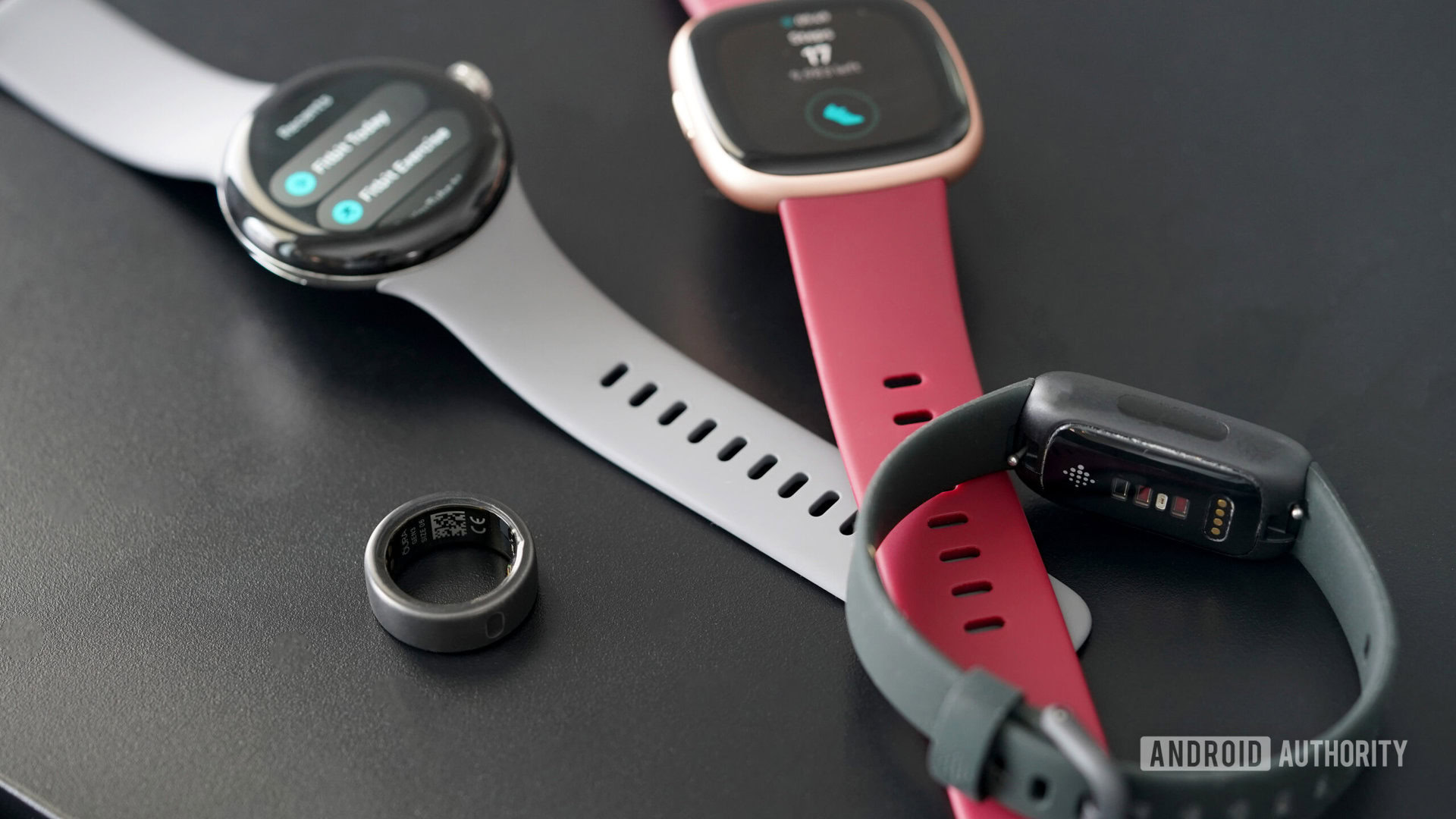
With one of the smallest form factors on the market, the Oura Ring is easing its way into the minds (and onto the fingers) of celebrities and shoppers alike. But how does the Oura platform stack up against more established ecosystems like Fitbit? In particular, both brands tout fantastic sleep tracking, but which is the better buy? We compare the Oura Ring vs Fitbit to see which company may offer the right fitness tracking experience for you.
Fitbit vs. Oura Ring: Fundamental differences
The most obvious difference between the Oura Ring and Fitbit trackers is how they are intended to be worn. The Oura Ring lineup is just that: a lineup of rings including three generations of devices. There are a few device models available within each generation, but those only offer stylistic differences, not unique features or internal specs. The Oura Rings are also all priced similarly when you don’t count sales. Again, the most expensive models are based on finish, not specs. The newest model, the Oura Ring 3, starts at $299.
On the other hand, Fitbit devices are designed as fitness-tracking wristwear, including small-form bands and smartwatches with large displays. The company boasts an extensive product list to offer users choices. These include picks from many different price points, from under $100 to over $300.
At the top, the Google Pixel Watch 2 is considered a Fitbit device with its extensive integration. It’s even sold on the Fitbit website. The Pixel Watch 2 offers the most robust smartwatch experience of the lot, with access to the Google Play Store, music support, calling features, and much more.
Fitness tracking with the Oura Ring
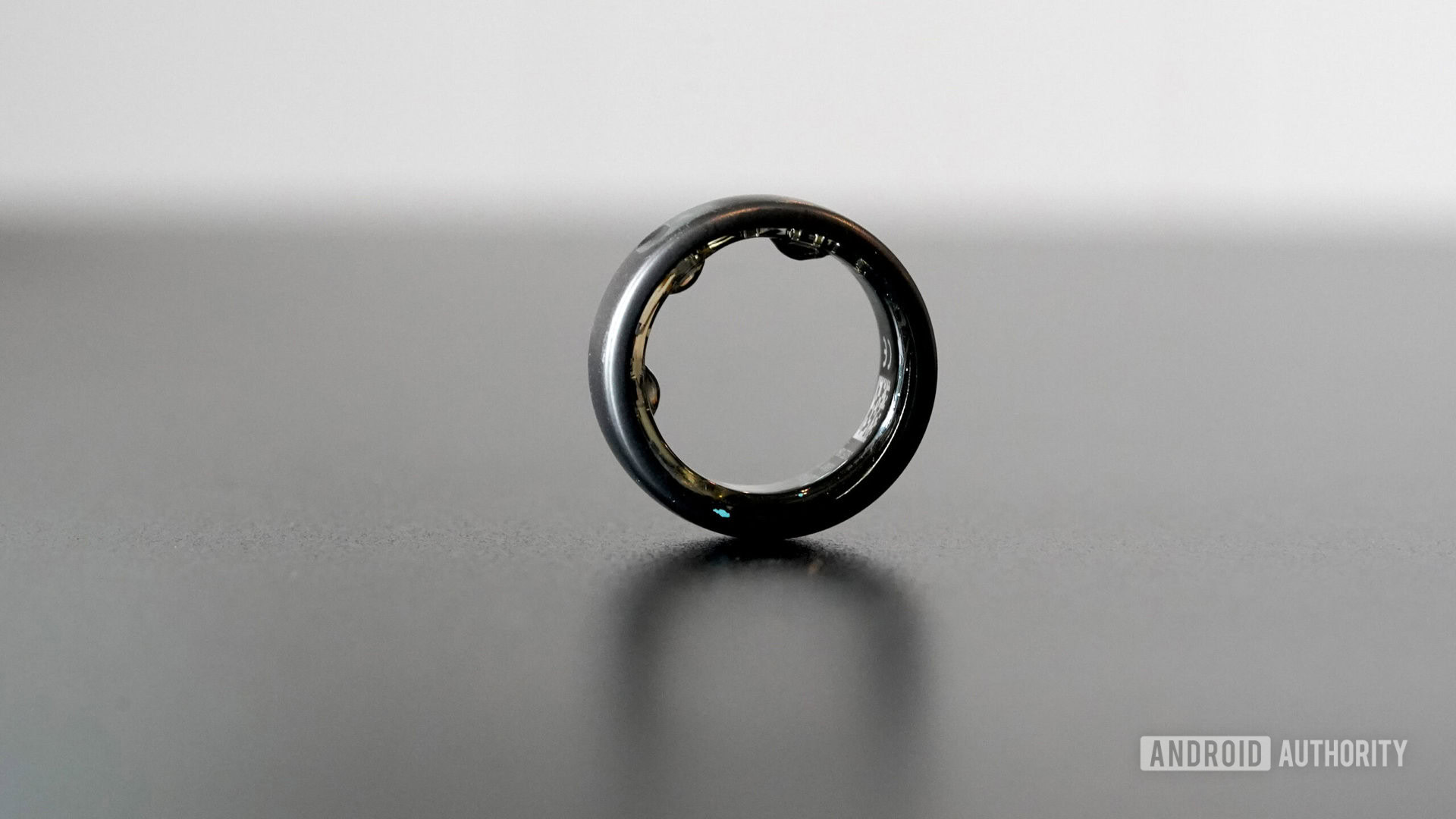
Despite their itty bitty form factors, Oura Rings pack an impressive range of sensors and features. The latest model, the Oura Ring 3, offers the following:
- Steps, calories burned, workouts, inactivity, training volume, training frequency, activity goal setting
- Optical heart rate sensor for 24/7 heart rate monitoring
- Cardiovascular age and capacity metrics
- Automatic activity detection
- SpO2 monitoring
- Skin temperature sensors
- Infrared Photoplethysmography (PPG) sensors
- 3D accelerometer
- Sleep tracking with details on time spent in REM, light and deep sleep, nighttime movement, resting heart rate, HRV, respiratory rate, and body temperature. Oura also provides a sleep score and automatically detects naps.
- Cycle tracking with period predictions and deeper insights
- Guided meditation, breathing, and sleeping exercises (via companion app)
- Stress tracking
Oura offers a unique approach to wellness tracking. Technically, the Oura Ring 3 can record dozens of important metrics (and it does so), but Oura also helps users cut through the noise of data overload.
Rather than digging into each variable, Oura users rely on three comprehensive scores: sleep, readiness, and activity. Each of these scores reflects an important aspect of holistic health. They can be motivational and direct you towards healthful improvements, but they are also digestible and provide a relaxed relationship with activity tracking. You won’t find any on-device move reminders or rings to close. In fact, the device has no screen at all, so you can check or ignore your data in the companion app as often as you want.
Oura helps users cut through the noise of data overload to reflect on clear, actionable stats.
The Oura app also echoes this hands-off approach to tracking in its look and data presentation. Users will find the quickest access to their three basic scores, as mentioned. These are based on your recorded metrics but also on the personal goals you set. The device will also learn your patterns and habits and adjust accordingly the longer you wear it. Our reviewer was impressed when her scores and guidance quickly adjusted to accommodate her naturally late bedtime. You can tap into further details at will and will find daily, weekly, and monthly data for rought 20 different health metrics.
We feel Oura excels most in sleep tracking, which isn’t a surprise since that’s where the brand started. During our review period, we found the Oura Ring 3 every bit as accurate as our Fitbit devices. The platform also offers niche metrics such as overnight movement and latency, which offers a more in-depth look at bedtime activity and habits.
We are currently on the lookout for the next generation Oura Ring to hit shelves. To keep up on the latest rumors and leaks and to find out what we hope to see, check out our Oura Ring 4 wishlist.
Fitness tracking with Fitbit
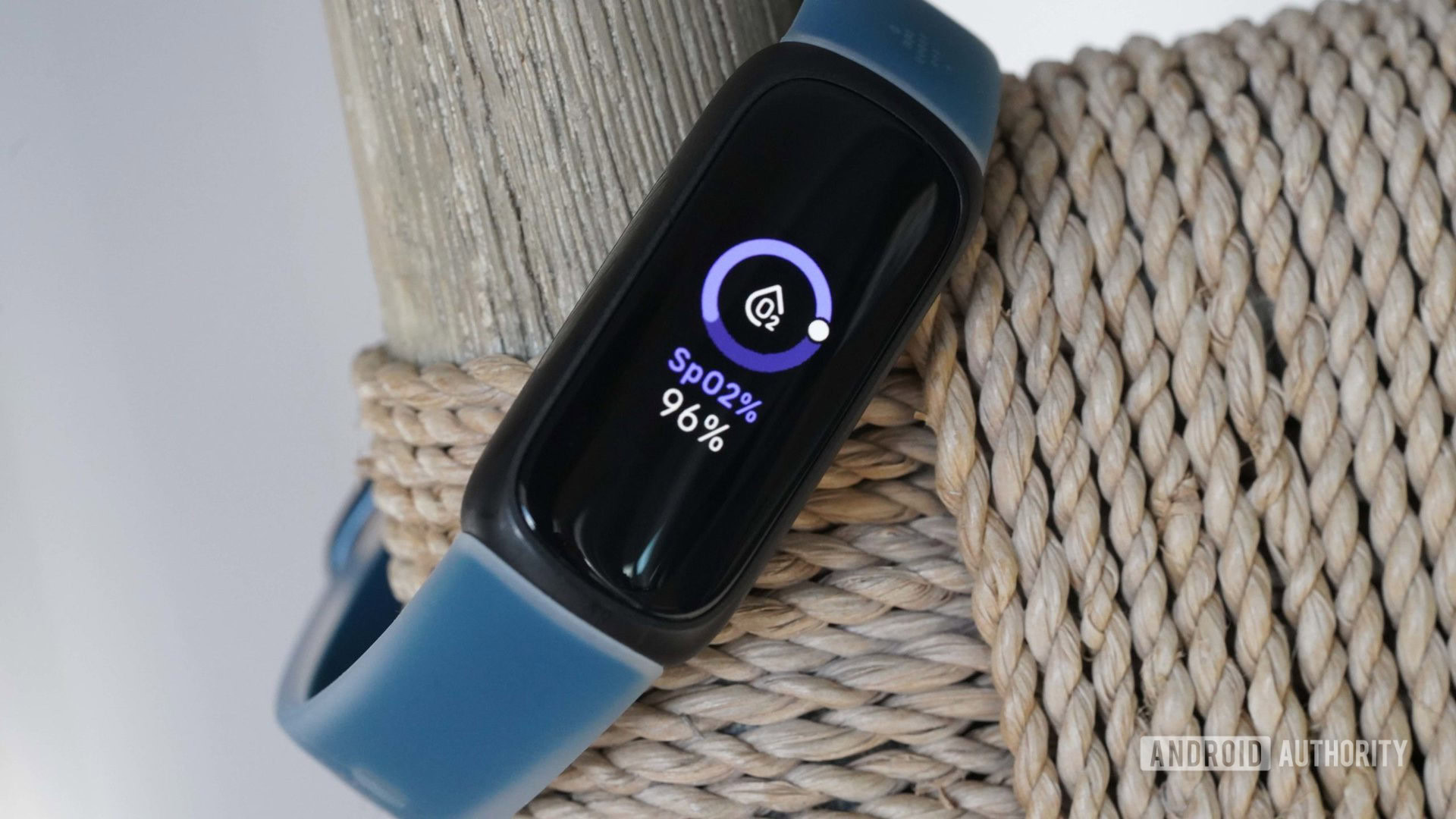
Fitbit devices also support a robust list of tracking tools and sensors. Though exact features vary from device to device, a typical Fitbit offers the following:
- Steps, calorie counting, and floors climbed via barometric altimeter
- Distance traveled and pace via standalone GPS or connected GPS
- Heart rate data on-demand, throughout the day, and during activity
- SpO2 monitoring
- Automatic activity detection
- Active Zone Minutes
- Sleep tracking with details on sleep stages, restoration, total time asleep, nighttime disturbances, and long-term trends
- On-device mindfulness tools
Additional features found on higher-end options include:
- Electrodermal activity monitoring (stress)
- Electrocardiogram (ECG)
- Skin temperature
Fitbit devices benefit from years of development. Most of Fitbit’s most popular lineups are a few generations in and have worked out many of the biggest kinks. Fitbit also boasts accurate heart rate sensors and consistent activity tracking. Many of our team members regularly utilize Fitbit trackers, and the lineup even has options for kids to start healthy goal-setting early.
Like Oura, Fitbit differentiates itself from other household names with highly reliable sleep tracking. In fact, we often use Fitbit devices to measure the accuracy of new devices during review periods. Fitbit’s sleep profile program also offers some of the best long-term sleep tracking guidance available.
Fitbit offers a larger stable of options including both trackers and smartwatches.
Beyond the wrist, another major draw of Fitbit’s fitness tracking platform is the Fitbit companion app. Unlike apps that can be overloaded with data and charts, the Fitbit app is easy to navigate. Fitbit sticks to the basics, making it a great choice for anyone new to fitness tracking and anyone with a causal relationship to exercise. In short, Fitbit makes basic activity tracking approachable. On the other hand, many users were unhappy about the app’s latest redesign. With a heavy Google influence aesthetically, the experience is now quite watered down.
Meanwhile, if you want advanced health insights such as skin temperature data or electrodermal activity monitoring, you must spring for one of Fitbit’s more expensive wearables. These features are not yet staple across the ecosystem. The best option is the Google Pixel Watch 2, which features the line’s top sensors and most robust experience.
Fitbit vs. Oura Ring: Design and hardware
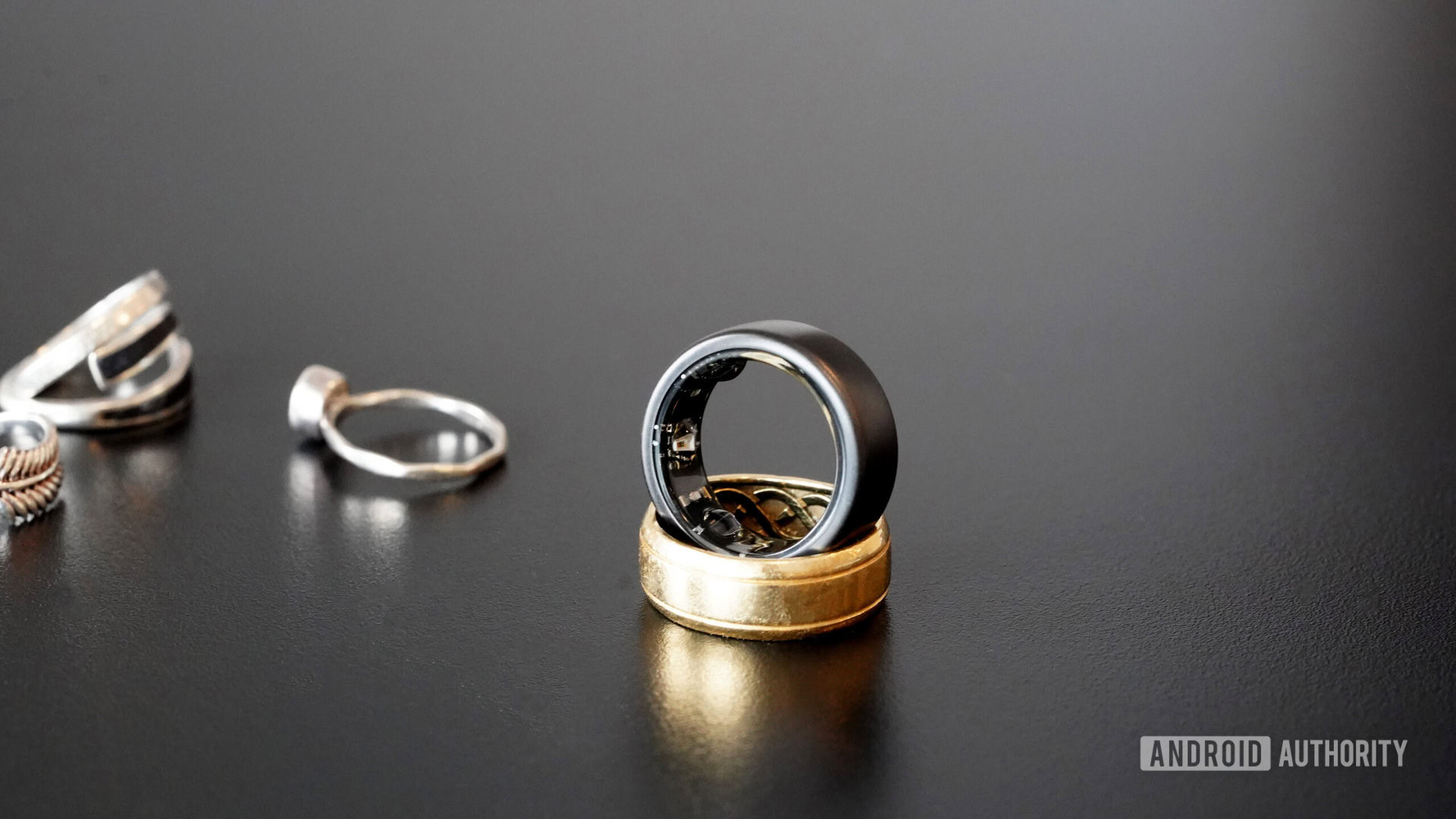
Obviously, aesthetics are significantly different when comparing the Oura Ring vs Fitbit’s lineup. The Oura Ring offers a unique design in a sea of bands and fitness watches. Rather than provide users with a colorful AMOLED display, the small, inconspicuous ring slips into your everyday wear like an oversized wedding band.
Each model is made of titanium and available in five metallic hues. The jewelry-inspired trackers are lightweight, elegant, and quite comfortable. They’re also available in 6 sizes, which you can test with a sizing kit delivered to your home after placing your order. Oura suggests wearing your ring on your index finger, but you can swap it to your ring or middle finger if that’s more comfortable. Most importantly, you want a snug fit. The idea is that you will quickly grow used to the device and forget it’s even there.
As mentioned, the ring packs an impressive amount of hardware into its tiny real estate, including health and fitness tracking sensors, a battery, and a Bluetooth chip. Unfortunately, you won’t find any GPS though. As for power, the Oura Ring 3 will last up to 7 days before needing juice and takes just 80 minutes to charge from 0 to 100%. We found topping up for 20 minutes or so each day (while in the shower, for instance), will keep your device in working order. Of course, it’s also water resistant to 100m, so you’re welcome to wear it in the shower instead. Each ring comes with a size-specific charging puck.
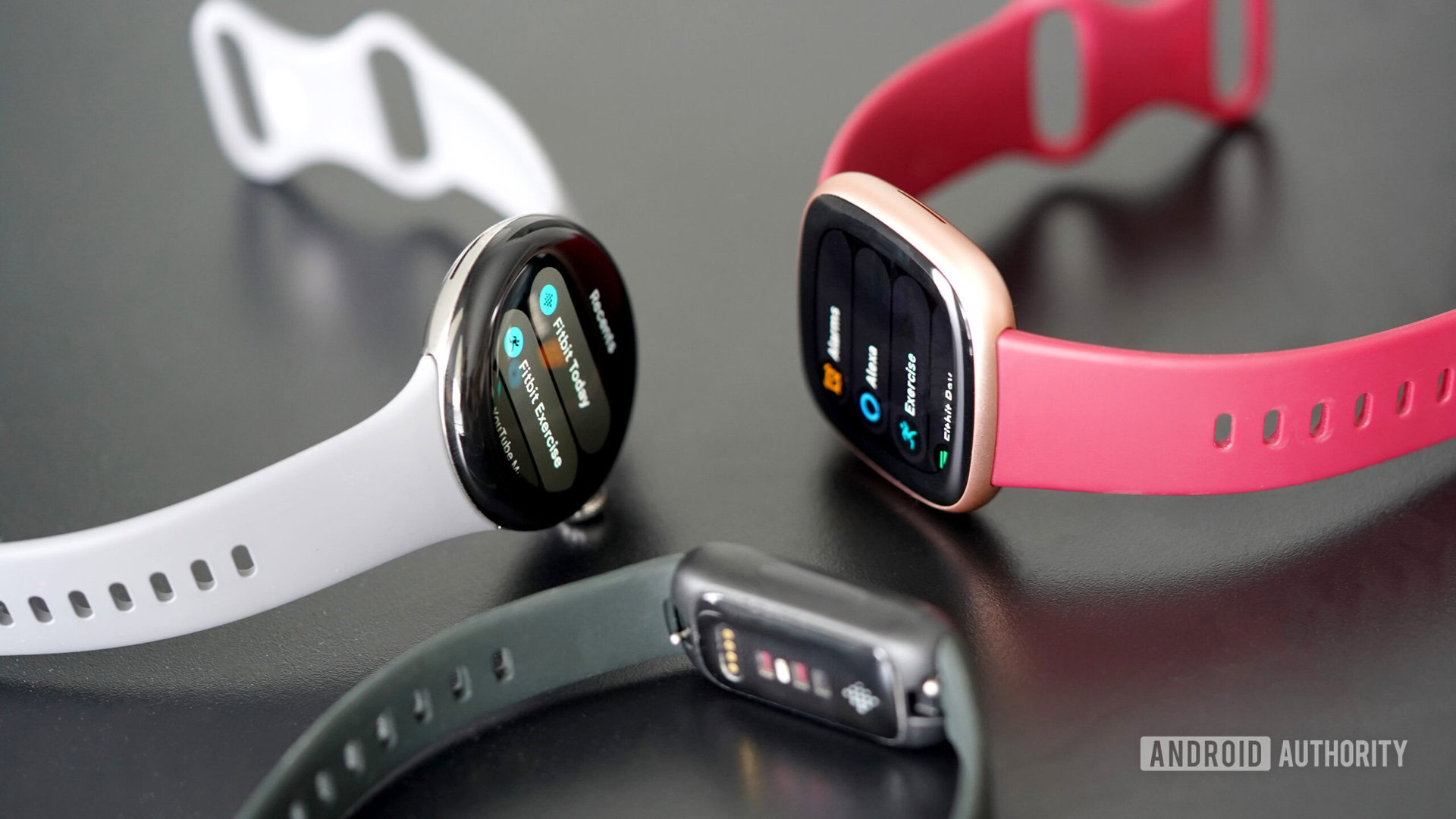
With multiple product lines, the Fitbit lineup offers much more diversity. Rounded square watch faces feature large AMOLED displays and useful buttons. Stylish, slim trackers offer more narrow but attractive displays with the same touchscreen capabilities. The devices are comfortable for all-day wear as well as for sleep tracking. Plus, almost all the options feature removable bands so you can personalize your device with colorful options in various materials.
Fitbit also outperforms many popular wearables (i.e., the Apple Watch) in terms of battery life. Nearly all of the company’s devices offer multi-day battery life, with many offering over a week between charges. Unfortunately, each also utilizes proprietary charges. There is some overlap between the lines, but they are all unique to Fitbit’s stable. Even the Pixel Watch 2 relies on a propriety charging puck different from its predecessor.
Oura vs Fitbit: Smartwatch features
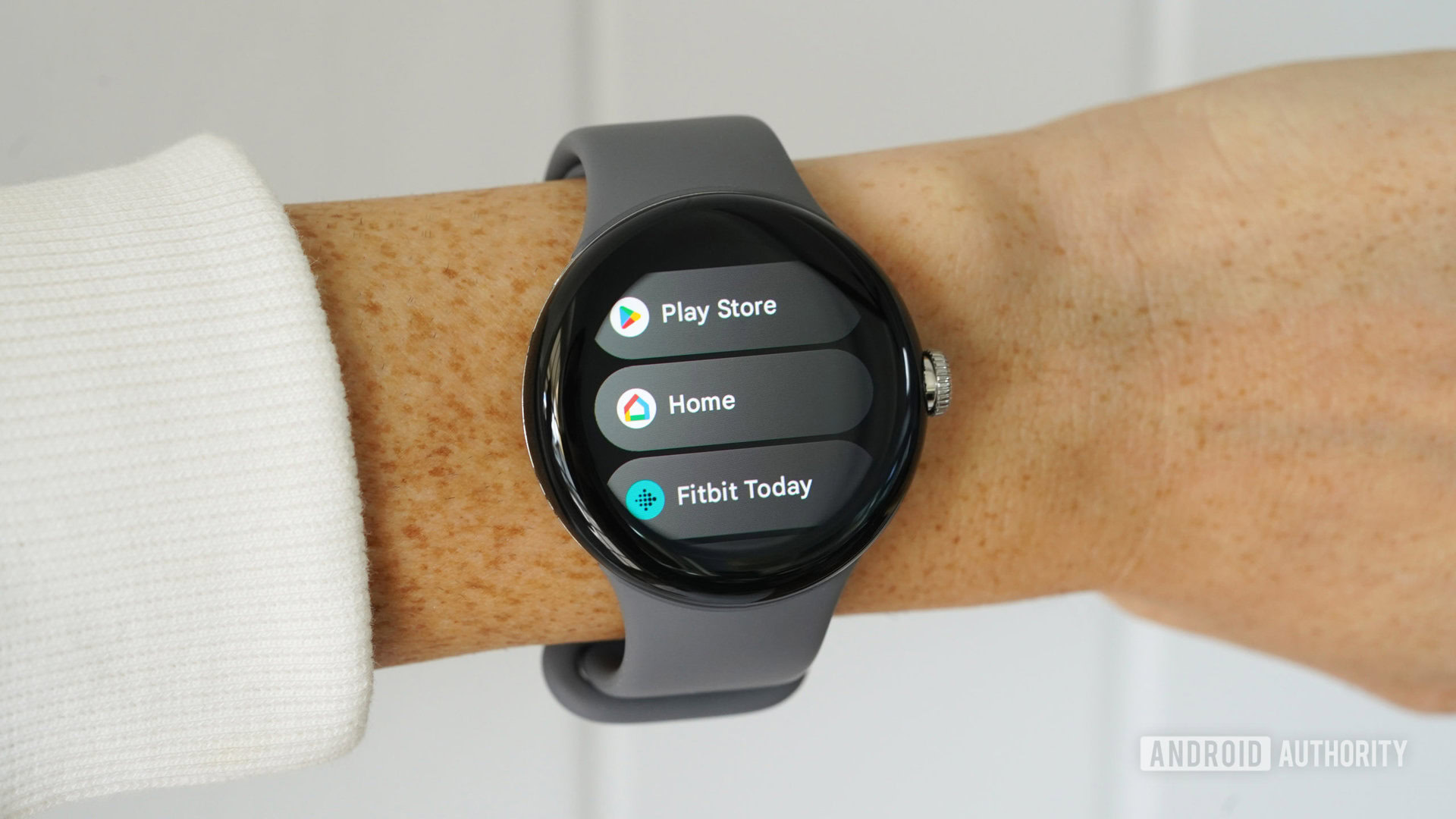
Smartwatch features represent another major difference when comparing the Oura Ring vs Fitbit trackers and watches. Without a screen or haptics, it should be no surprise that the Oura Ring offers no smart features. If you’re after tools like notifications, music controls, or call support, you must stick with wristwear for now. On the other hand, Fitbit offers various smart features on its devices, including its fitness trackers. The Fitbit Charge 6, for example, features digital payments, notifications, and integration with key Google apps.
Fitbit’s dedicated smartwatch lines offer even more, though not as much as they used to. Currently, the watches feature basic compatibilities like notifications, calendars, and Bluetooth phone call support. The Versa 3 and Sense support Alexa and Google Assistant, but the newest generations only feature Alexa. Likewise, only the older Fitbit devices offer third-party apps and a limited number of pre-loaded apps. Starting in June, Fitbit will no longer allow third-party apps to be downloaded. In other words, these lineups aren’t the most fully-featured smartwatches you can find
The Google Pixel Watch and Pixel Watch 2 (unconventional Fitbits) offer much broader smartwatch experiences. In addition to the best of Google’s tools, users can use the Google Play Store to access many third-party apps. The watch also offers onboard music storage and an LTE model.
Oura Membership vs. Fitbit Premium
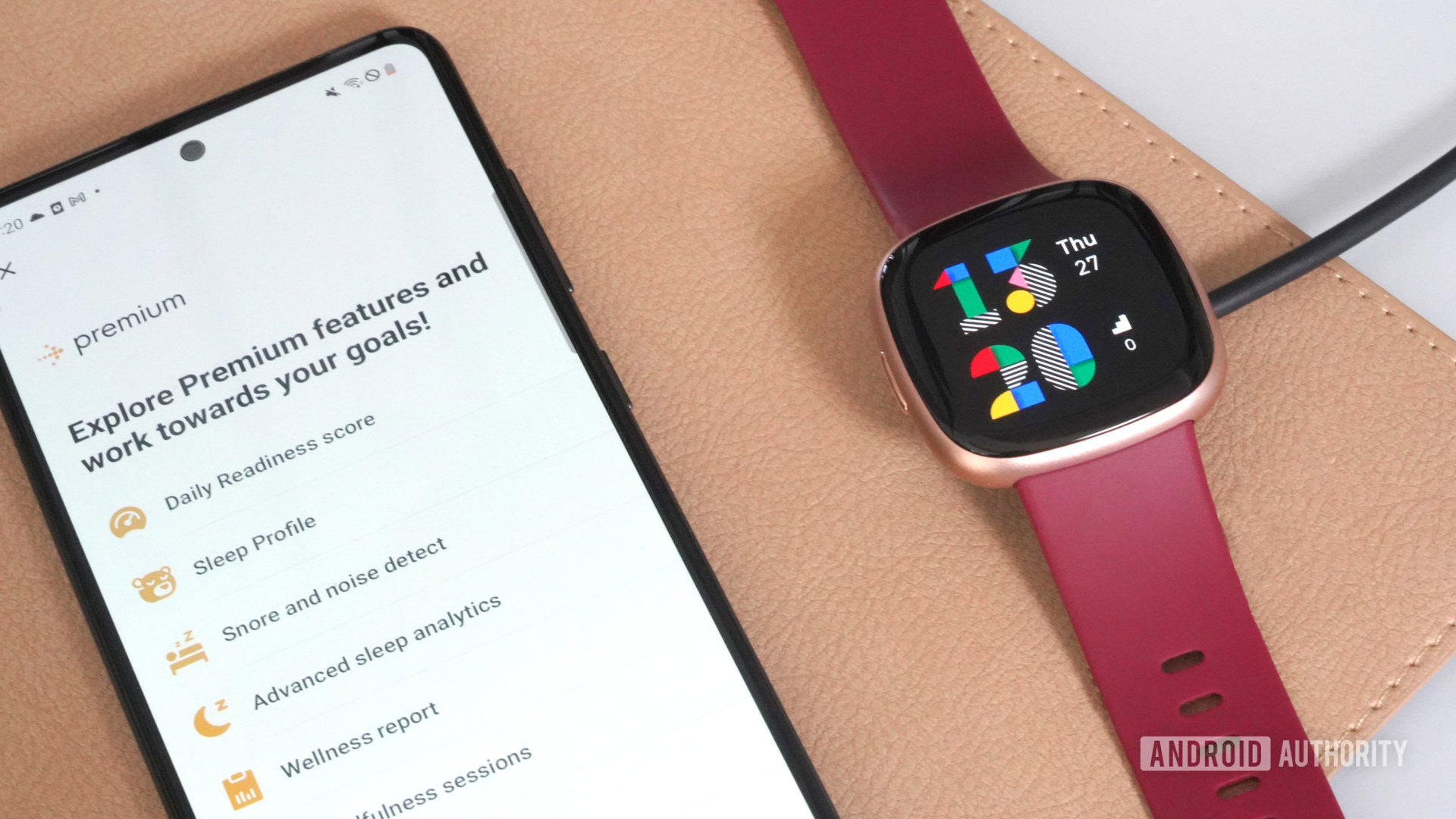
When comparing the Oura Ring and Fitbit, one arena in which the companies match up somewhat is in premium services. Unfortunately, to get the most out of either ecosystem, you must pay for a subscription. This can be a tough pill to swallow, considering the initial price of some of these devices.
After dropping upwards of $300 on an Oura Ring 3, users are nearly required to pay an additional $5.99 monthly for an Oura membership. You can use the device without it, but not nearly as effectively. You can only access your three main scores for sleep, activity, and readiness. Heart rate data, SpO2 recording, trends and prediction, and any other detailed data are all locked behind the paywall. Each Oura Ring 3 purchase comes with a one-month free trial membership.
Likewise, Fitbit devices are rounded out with a Fitbit Premium account. The subscription service provides detailed insights, advanced tracking metrics, guided workout content, and a personal Health Metrics dashboard. Fortunately, many new Fitbits offer free 6 to 12-month subscriptions so you can determine if you need the service before committing.
Oura vs Fitbit: Final thoughts
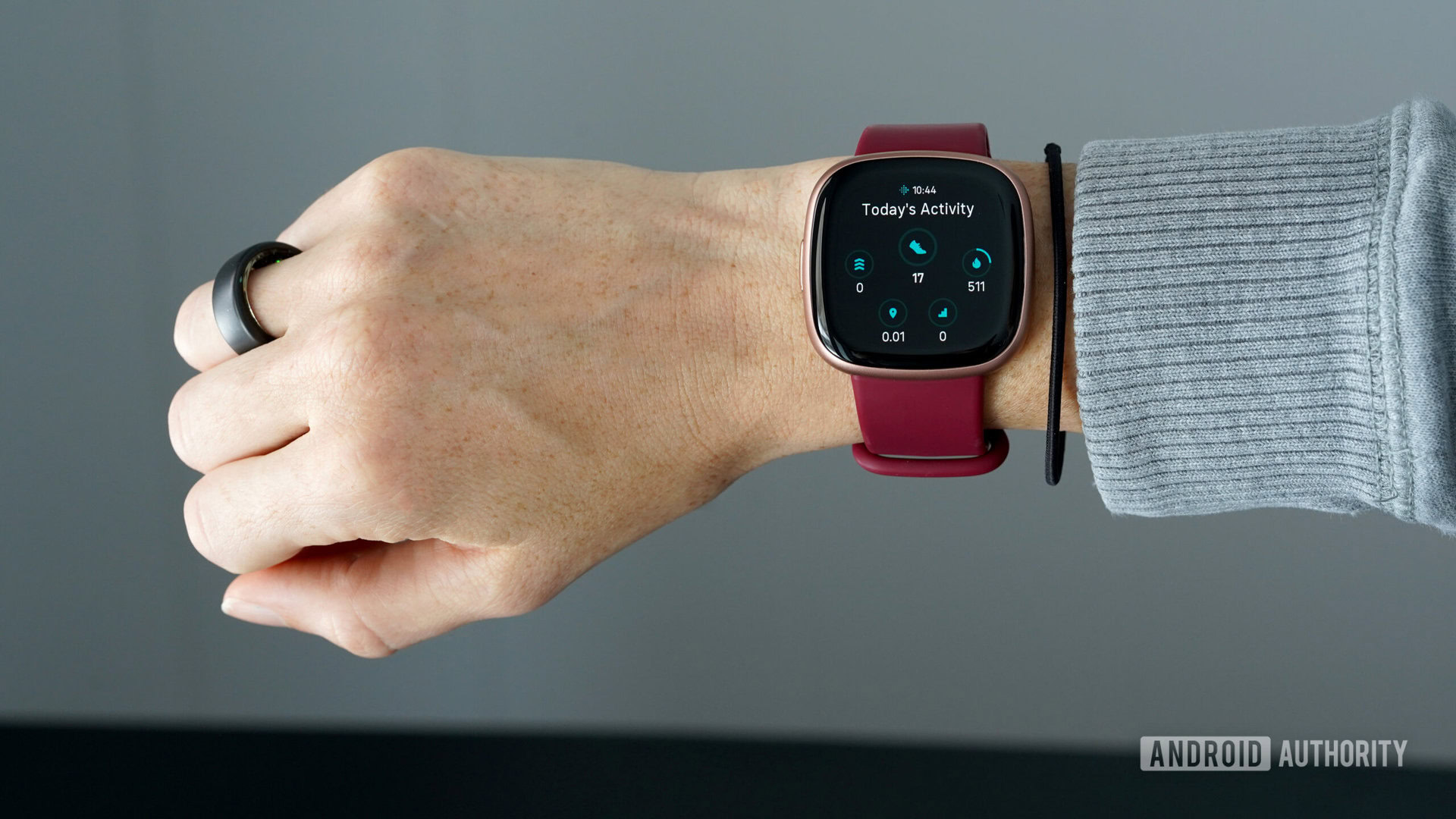
With such different form factors, the choice is pretty simple. If you want a ring, go with Oura. If you want a band or watch, check out Fitbit’s stable. Likewise, if you want quick access to your data on-device, Fitbit is the logical pick. Oura is best for a nonintrusive option that will blend into your day. On a deeper level, an Oura Ring vs Fitbit conversation comes down to your desired tracking experience.
Fitbit offers an approachable version of traditional tracking. Stats are divided into popular categories, and data is presented cleanly on a bright screen. The Fitbit companion app is also user-friendly. It’s a great ecosystem for anyone just starting on their fitness-tracking journey.
Oura provides a more holistic look at your activity and recovery. With overarching scores, it simplifies the data stream into bite-size information. Oura also adapts to each user to provide a personalized approach to wellness tracking. It’s the perfect blend of passive tracking and actionable insights.
FAQs
Most Fitbit devices are water-resistant to depths of 50m. The Oura Ring 3 is water-resistant to depths of 100m.
Yes, you can shower with the Oura Ring 3 and newer Fitbit devices, though you should avoid exposure to soaps and shampoos.
At this time, Fitbit wearables do not offer blood pressure monitoring.
We’d also like to know what you think. Which company offers a stronger experience, Oura or Fitbit?